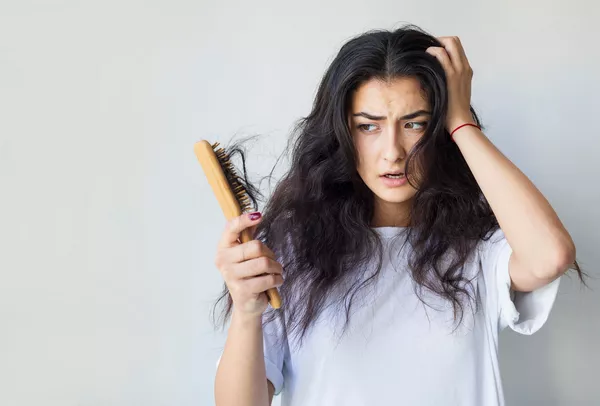When it comes to hair loss, alopecia stands as one of the most enigmatic conditions. Affecting millions worldwide, alopecia can manifest in various forms and severities, leaving individuals grappling with its emotional and physical toll. In this article, we delve into the fascinating world of alopecia, exploring its different types, possible causes, and the journey it takes from its initial signs to the point of full hair loss.
I. Understanding Alopecia:
A. Types of Alopecia:
Alopecia encompasses a range of conditions, each with its unique characteristics. Androgenetic alopecia (also known as male or female pattern baldness) is the most common form, inherited and primarily affecting the scalp. Alopecia areata presents as patchy hair loss, often attributed to an autoimmune response. Traction alopecia results from excessive tension on the hair follicles due to hairstyles like braids or ponytails. Lastly, alopecia universalis causes total hair loss on the scalp and body.
B. The Hair Growth Cycle:
Before delving into how alopecia initiates, it is crucial to understand the normal hair growth cycle. Hair goes through three main phases: anagen (growth phase), catagen (transition phase), and telogen (resting phase). The disruption of this cycle plays a significant role in the onset of alopecia.
II. Unveiling the Precursors:
A. Genetic Predisposition:
In the case of androgenetic alopecia, genetics plays a significant role. Research indicates that specific genes inherited from either parent influence the sensitivity of hair follicles to androgens, leading to gradual miniaturization and eventual hair loss.
B. Autoimmune Factors:
Alopecia areata is associated with an immune system malfunction, where the body mistakenly attacks healthy hair follicles. Stress, environmental triggers, or other underlying autoimmune conditions can contribute to the development of this form of alopecia.
C. External Factors and Hairstyles:
Traction alopecia is often a consequence of repetitive tension or pulling on the hair, resulting from tightly styled hairstyles or hair extensions. The continuous strain weakens the hair follicles, leading to hair breakage and loss.
III. The Journey to Hair Loss:
A. Subtle Signs:
Alopecia rarely presents itself abruptly. Instead, it often starts with subtle signs that go unnoticed or are mistaken for temporary shedding. These signs may include increased hair fall during washing or brushing, receding hairline, thinning hair, or small bald patches.
B. Progression and Severity:
As alopecia advances, its severity and pattern of hair loss become more apparent. For androgenetic alopecia, gradual thinning and receding hairline occur over time. In alopecia areata, hair loss tends to progress in patches that can merge and cause complete baldness in severe cases. Traction alopecia manifests as a widening of the hair parting, thinning around the hairline, or bald spots at the points of tension.
C. Emotional Impact:
Hair loss can be emotionally devastating, affecting an individual’s self-esteem and mental well-being. The psychological impact of alopecia is often underestimated, leading to anxiety, depression, and social withdrawal. Recognizing and addressing these emotional struggles is essential for a comprehensive approach to alopecia management.
IV. Seeking Solutions:
A. Medical Interventions:
Various treatments are available to manage alopecia, depending on the type and severity. Medications like minoxidil and finasteride can slow down hair loss and promote regrowth. In the case of alopecia areata, corticosteroids or immunomodulatory drugs may be prescribed to suppress the autoimmune response.
B. Topical Treatments:
Topical solutions, such as minoxidil, can be applied directly to the scalp to stimulate hair growth and slow down the progression of androgenetic alopecia. These solutions are available over the counter and can be used by individuals experiencing early signs of hair loss.
C. Hair Transplantation:
For individuals with advanced hair loss or alopecia universalis, hair transplantation may be a viable option. This surgical procedure involves taking hair follicles from a donor area and transplanting them into the affected areas. Advances in technology and techniques have made hair transplantation a popular choice for those seeking a permanent solution to their hair loss.
D. Lifestyle Changes:
In many cases, adopting certain lifestyle changes can help manage alopecia. This includes reducing stress levels, maintaining a balanced diet rich in nutrients essential for hair health, avoiding harsh hair treatments and styles that exert excessive tension, and practicing good scalp hygiene.
V. Coping with Alopecia:
A. Support Systems:
Living with alopecia can be challenging, but support systems can make a significant difference. Connecting with support groups, online communities, or seeking professional counseling can help individuals cope with the emotional impact of hair loss. Sharing experiences, finding encouragement, and learning about coping strategies from others facing similar challenges can provide a sense of belonging and empowerment.
B. Hair Alternatives:
While treatments aim to promote hair regrowth, some individuals may opt for hair alternatives to enhance their appearance and confidence. Wigs, hairpieces, or scalp micropigmentation are popular options that provide a natural-looking solution to those who desire immediate aesthetic improvements.
C. Embracing Change:
For many individuals, alopecia can be an opportunity for self-acceptance and personal growth. Embracing one’s unique appearance and developing a positive body image can help foster resilience and self-confidence. Celebrating inner qualities and focusing on overall well-being beyond physical appearance can lead to a fulfilling and empowered life.
Conclusion:
Alopecia is a complex condition that encompasses various types, each with its distinct causes and progression. Recognizing the precursors and understanding the journey from initial signs to complete hair loss is crucial in managing alopecia effectively. Whether through medical interventions, lifestyle changes, or embracing alternative solutions, there are ways to cope with hair loss and regain confidence. By raising awareness, providing support, and fostering acceptance, we can ensure that individuals affected by alopecia feel empowered and supported throughout their journey. Remember, hair does not define beauty or self-worth—true beauty lies in embracing oneself, flaws and all.

